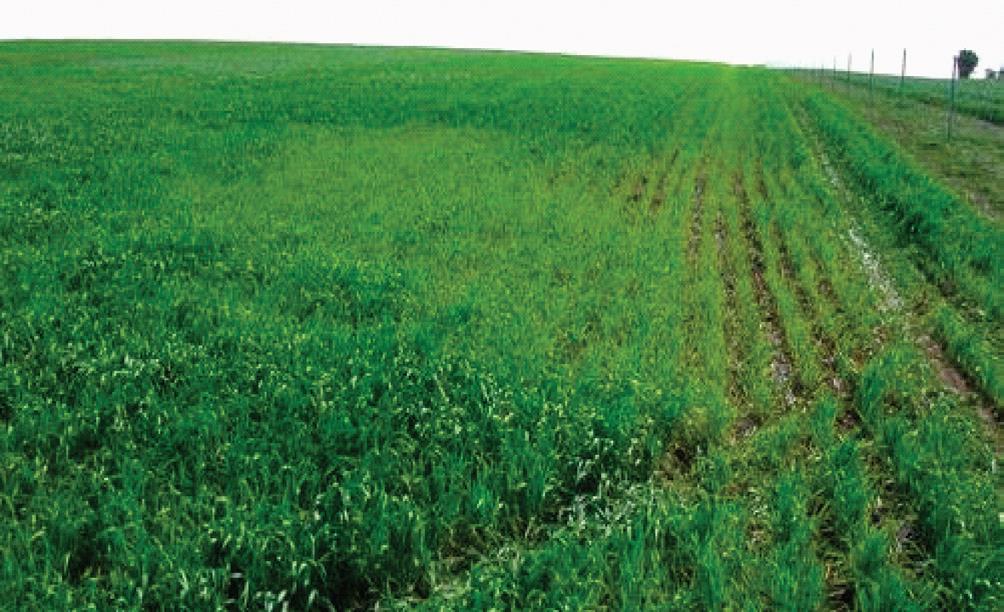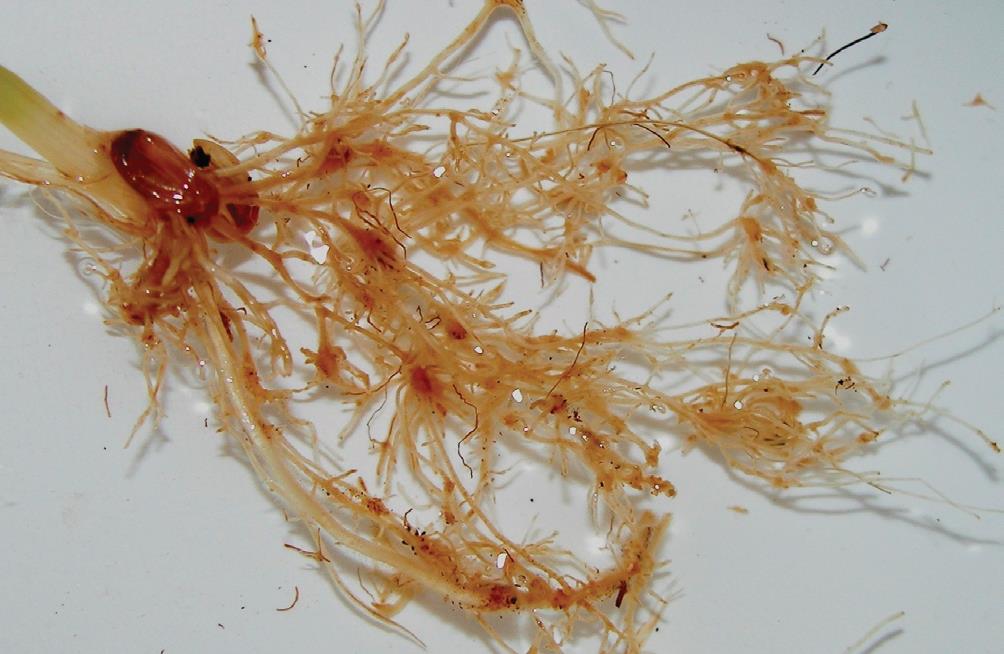
Cereal cyst nematodes
| Primefact number | Edition | Published | Author |
|---|---|---|---|
| 1496 | First | Jun 2017 | Plant Biosecurity and Product Integrity |


Cereal cyst nematodes (Heterodera avenae [exotic strains], H. filipjevi and H. latipons) are exotic plant pests not present in Australia. These nematodes are a serious threat to Australia’s grain industry.
Cereal cyst nematodes are plant-parasitic nematodes that are major pests of grain crops. Young cereal cyst nematodes infest the roots of grain crops while the adult female cereal cyst nematodes become egg filled cysts. Annual wheat losses from endemic cereal cyst nematodes in Australia have been estimated at $A70 million a year.
Notifiable status
Cereal cyst nematodes (Heterodera avenae [exotic strains], H. filipjevi and H. latipons) are not notifiable plant pests in NSW.
However, if you suspect cereal cyst nematodes:
- Call the Exotic Plant Pest Hotline 1800 084 881
- Email biosecurity@dpi.nsw.gov.au with a clear photo and your contact details
A full list of notifiable plant pests and diseases can be found in Schedule 2 of the NSW Biosecurity Act 2015.
Description
Cereal cyst nematodes are small worms which live on plant roots. The female nematodes look like small, white, lemon-shaped balls sticking out of the root. These pinhead-sized balls are about 1 mm wide. The male nematodes are hard-to-see tiny, threadlike, transparent worms.
Yellowing or stunting of grain plants is an early symptom of cereal cyst nematode infestation (Figure 1).
Infested wheat plants have reddish-yellow leaves with thin, narrow leaf blades. Poor plant tillering, uneven crop patches, poorly filled grain heads and early plant death are other above-ground signs of crop infestation.
Cereal cyst nematodes cause elongation of the main plant roots, bunched rootlet tips and “knotted” lateral roots in wheat and barley crops (Figure 2). Infested oat plant roots appear swollen and “ropey.”
Cereal cyst nematode infestations may be confirmed by sighting the white female nematodes or brown nematode cysts on plant roots during the growing season. However this identification should be verified by a certified diagnostic nematology laboratory.
Damage
The endemic strain of cereal cyst nematode in Australia causes 80% yield losses in grain crops.
Cereal cyst nematodes damage plant roots causing nutrient deficiency symptoms which require extra fertiliser to curb yield losses.
When looking for these pests care needs to be taken as cereal cyst nematode damage can appear similar to the effects of drought stress, nutrient deficiency or herbicide damage.
Lifecycle
Cereal cyst nematodes complete one lifecycle every season and each female nematode lays up to 600 eggs.
The cereal cyst nematodes have three lifecycle stages: eggs, juveniles and adults. Juvenile nematodes emerge from the eggs after rain. The juvenile females invade the host plant root tips and establish feeding sites.
The female nematodes swell up and rupture the plant roots as they produce their eggs. When the cereal plant ripens the adult female nematodes die and their egg-filled bodies harden and become nematode cysts.
After the female’s death, the cysts change skin colour from white to brown. The nematode cysts are resistant to dehydration and the eggs inside them can remain viable for up to four years.
Host range
The main host plants of cereal cyst nematodes are wheat, barley, oats, rye and triticale. Other hosts include grasses, maize and wild oats.
Spread
Cereal cyst nematodes are spread from farm-to-farm in cyst infested soil or plant material by farm machinery, footwear, humans, livestock, vehicles, water and wind. Juvenile nematodes can move through the soil from their eggs to host plants.
Distribution
Australian distribution
Only one strain of the H. avenae cereal cyst nematode is present in Australia. This strain (Ha13) has been recorded in Western Australia, South Australia, Victoria and New South Wales. No other strains of cereal cyst nematode have been found in Australia.
World distribution
Cereal cyst nematodes are found in many grain growing countries across Africa, Asia, Europe and North America. They are also present in New Zealand.
Actions to minimise risks
Put in place biosecurity best practice actions to prevent entry, establishment and spread of pests and diseases:
- practice “Come clean, Go clean”
- ensure all staff and visitors are instructed in and adhere to your business management hygiene requirements
- source seed of a known high health status from reputable suppliers
- monitor your crop regularly
- keep records

